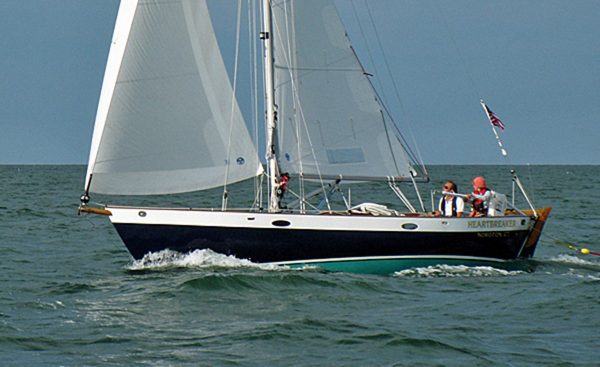
The very first Frances built by Tom Morris. It had a custom designed tall rig with double spreaders and added a genoa jib, so was an excellent performer. Tom Morris hit the ground running. The quality of every aspect of this yacht still is stunning, 47 years later. Tom had the idea he wanted to build the world’s finest boats, so the Frances was the most expensive sailboat of its size in the world when first introduced. Now, when most mass production sailboats have become worthless, serious sailors are bidding up the prices of Tom’s used yachts owing to their rarity.
The Frances 26 was my first successful design. I designed her in 1975. About 35 of them were built by Morris Yachts and 175 by Victoria Marine in the UK, and a few others built one-off in the WEST System all around the world. They are well-loved, built strong enough to last a century if well maintained, and highly sought after on the used boat market.
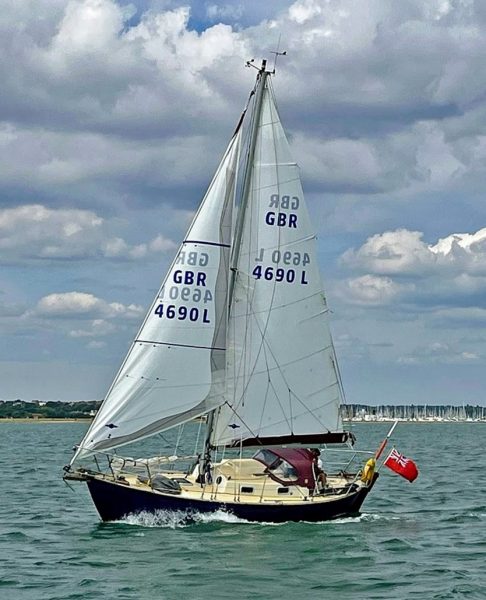
IBEX is one of the many British built Franceses. She sails out of Poole Harbour, UK.
Although originally intended as a coastal cruiser for a couple or small family, the Frances design was often chosen by singlehanders and adventurous couples for long distance sailing. As such she joined the 25’ – 3”. Giles Vertue, 26’ Contessa 26, 25’ – 2” Atkin Eric Jr. and Lyle Hess’s small versions of the Bristol Channel Cutters and Falmouth punts. All of these yachts are small enough to be handled by a single person of average strength, but heavy enough to not get tossed about at sea as much as the run of the mill production yacht. What they have in common is heavy displacement, heavy ballast, and all were built to last. All have far lower maintenance and dockage costs than larger yachts. All of them have a CSV (Capsize Screen Value) of under 2.0 – a rough indicator of a hull’s survivability in heavy weather. The CSV of the FRANCES is 1.70. The MCR – Motion Comfort Ratio – of the Frances is 29.4… a favorable number for a hull of this size. It must be remembered, though, that 26 feet is too small by far for open ocean sailing as proven by the results of the 1079 Fastnet race, where the majority of abandonments and deaths occurred on yachts of less than 34 feet in length!
Regrettably, no yachts of this type are being production built today. If you want one, the choices are to have one custom built or to restore an older one if you can find it on the brokerage market.
Thanks to the scourge of inflation, and the fact that ”molds” do not exist for any of them anymore, the cost to build the cheapest (lightest) of these designs would be over $400,000, and the heaviest – the Vertue and Lyle Hess’s Seraffyn, would cost on the order of $650,000. (May, 2023 estimates). A custom built Frances would cost about $550,000. Building plans are obtainable, I believe, for all except the Contessa.
There are, I suppose, a few individuals in the entire world who could afford to build new, but you can count them on the fingers of one hand. More realistic is to buy a well-worn Frances, strip it back to a bare hull and ballast, and go on from there. Since the hull and ballast would represent about one-third of the cost of a new custom yacht, you thereby save at least $175,000 off of a completely new build, minus what you pay for the boat on the brokerage market. There are three people doing just that at the present moment of whom I am aware.
How does the Frances fit into this select group of small yachts?
Of these designs, the Frances is the one with the most headroom, at 5’ – 11”. The Vertue and Hess cutters are a few inches less, and the Countess and Atkin Eric Jr. are essentially sitting headroom boats.
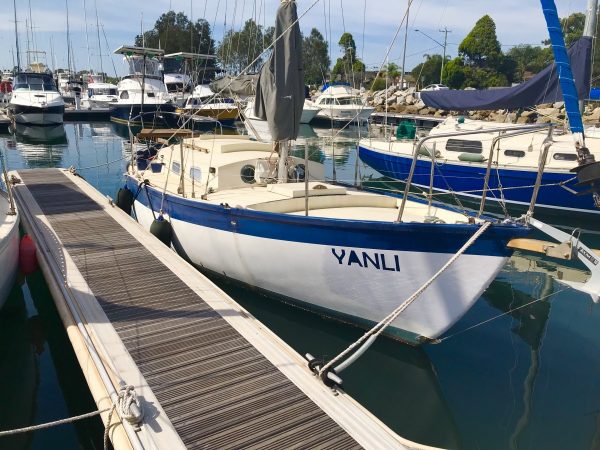
YANLI, shown in Bateman’s Bay, Australia. She has been sailed from England to New Zealand, thence to Hawaii, and back to Australia. Still looks pretty good after all those miles.
The Frances and the Contessa have fiberglass hulls. The others are made of wood.
The Frances and Eric Jr. are double-enders. It is commonly thought that this shape makes a vessel easier to steer either manually or using a windvane device. Lyle Hess’s designs are the beamiest and heaviest in the group. As such they are the most stable and comfortable in a seaway, but the slowest. The Contessa 26 is the lightest, making it the least stable and probably the fastest. The Contessa, Eric Jr. and Frances have the shallowest draft at about 4 feet; the Vertue the deepest at 5 feet.
All of these designs have a long, continuous profile keel with an attached rudder, perhaps the reason that they have found their way into this group… they all “track” very well. They are all steered with a tiller.
The American Frances was built by Tom Morris, probably the highest quality yacht builder ever to build in fiberglass. For this reason, and the high attendant prices, only a few (35) were ever built. His fiberglass shop was the cleanest, best lit shop I have ever seen, and the personnel were educated and well treated. A Morris single-skin fiberglass hull is some of the finest fiberglass layup work I have ever seen. Throughout the mass production boatbuilding industry the “glass shop” was employment of last resort for unskilled, uneducated workers – often undocumented workers or prisoners on work release programs – and the quality of glasswork suffered as a consequence.

TOM THUMB- custom built in Australia. If you were willing to carry a little too much sail she could even be raced, as she is here.
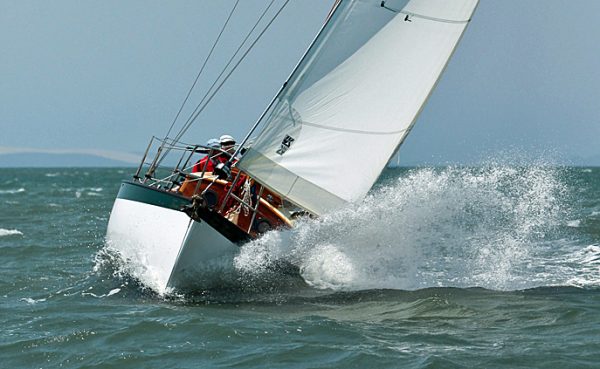
The Frances has a long, relatively shoal draft keel. The shoal draft is much admired, the continuous profile sheds lobsterpot lines and other flotsam, but her shoal draft limits her stability and pointing ability. The Contessa and Eric, Jr. are also of shoal draft, while the Vertue and Hess designs are deeper. I have never sailed a Vertue, so cannot report on its pointing ability. The one Hess design I have sailed had outboard chainplates and the jibs trimmed to the rail, and it is a very beamy boat, so it could not point at all well.

The Frances keel had an undulating profile that drew less than four feet. A modification to the keel profile has been designed to deepen the draft slightly for better pointing ability.
When first designed I drew two basic sailplans. One was a fractional rigged sloop with a tall mainsail and small, self-tending jib. The other had a three-foot shorter mast with a bowsprit and cutter foretriangle carrying a yankee and staysail. Neither rig had a genoa.
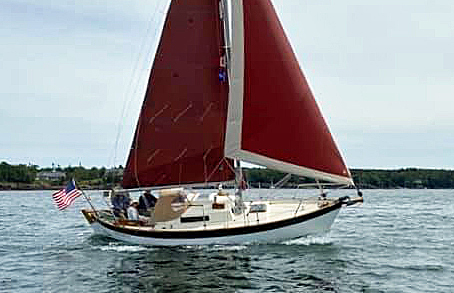
A cutter rigged Frances that was sailed transatlantic and now lives in Maine. Often owners will sail them like this in moderate conditions and then roll up the outer jib and sail with the inner one and reefed main in a blow.
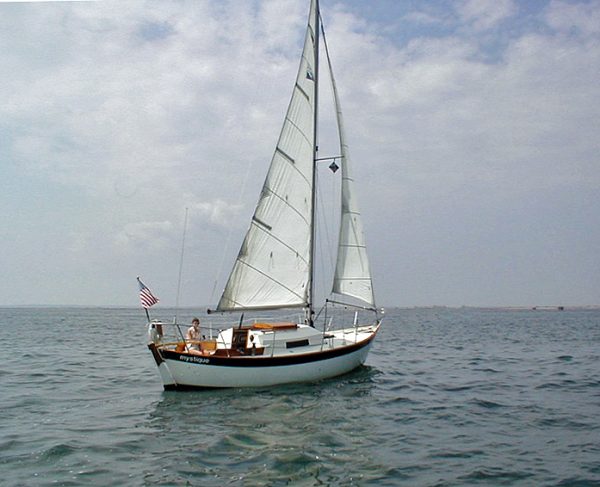
The sloop rig. It had a small, self tending jib and a tall mainsail. It was slow in light airs but could carry on into more breeze without reefing.
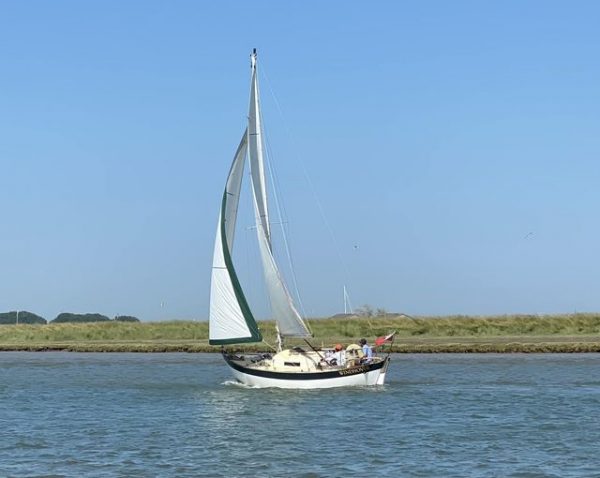
Just changing from the small boomed jib to a genoa turned the fractional rigged FRANCES into a great all-round sailor.
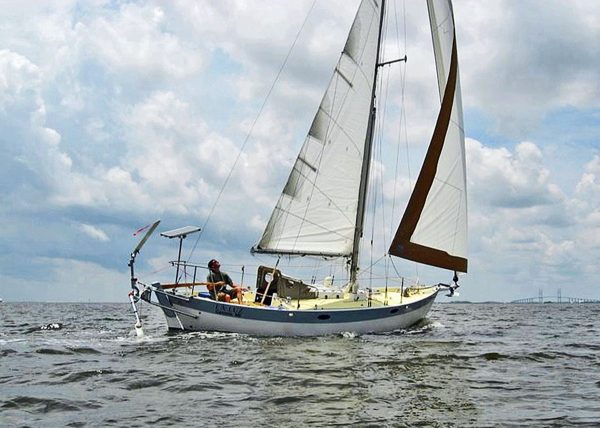
Two new sailplans have been designed- one for aluminum and one for a carbon mast. Both are shorter in height but carry a genoa jib.
Building plans are still available for the FRANCES. I remain ever hopeful but am under no illusions as to the likelihood of someone coming forward and building a new boat at today’s prices. Far more likely are a few more people seeing the virtue of a yacht of this size and caliber buying an old Frances for the going price of $25,000 to $50,000, and doing a complete restoration. You can read another article on this website about the five such projects that are ongoing.
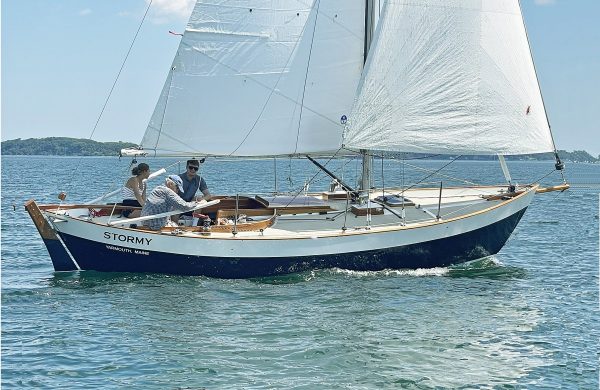
-Chuck Paine May, 2023
